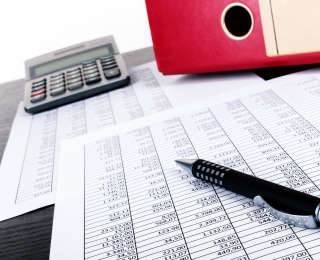Home »
This is not to discredit accountants by any means as having a good accountant on your team is absolutely paramount to your success as a property investor. As always however, unless your accountant is a successful property (or other asset class) investor themselves, then be wary of which advice you follow and consider the tax implications of the advice simply as part of the frame work of your overall decision making, not at the core of it.
 Firstly, a very basic understanding of tax is needed and although you should always seek specific tax advice for your personal situation, there is some general tax knowledge that needs to be understood before we can talk about property. Importantly none of what is discussed is specific tax advice and you should always take your own personal circumstances into account before making any investment decisions that may impact your tax position.
Firstly, a very basic understanding of tax is needed and although you should always seek specific tax advice for your personal situation, there is some general tax knowledge that needs to be understood before we can talk about property. Importantly none of what is discussed is specific tax advice and you should always take your own personal circumstances into account before making any investment decisions that may impact your tax position.
On a very basic level, paying tax is a good thing. This might sound counter intuitive to most people but the facts are that if you are paying tax then you are making money – and who doesn’t want to make money?
From here of course, it is always best if you can legally minimise your tax bill. As the late Kerry Packer infamously said before a parliamentary enquiry in 1991, anyone who wasn’t doing everything they could to legally minimise their tax bill “want their heads read.” The important part to note here is that the Australian Tax Office (ATO) recognises that tax minimisation is legal and provided the methods used are approved ways to reduce your tax liability, there will be no men in dark suits knocking at the door. This differs to tax evasion where illegal methods are used to hide income and therefore evade paying tax on that income altogether.
Most people pay tax through their PAYG earnings through an employer. There is a commonly misunderstood aspect to this when people say, “If I get a second job/earn overtime/get a bonus, I lose half the money in tax.” This is not the case at all! If you earn $40,000 p.a. at one job and get a second job earning $20,000 p.a. or make an extra $20,000 in overtime, you will still be taxed on the cumulative amount of $60,000 at the end of the year i.e. as though you had simply earned a salary of $60,000. The main difference is that on the extra income, the ATO simply overestimates your tax liability at the time of earning and taxes you at the highest rate on that extra amount temporarily.
At the end of the year your tax return is completed, and you pay the same amount of tax as if you had earned $60,000 total. This applies to bonuses, overtime pay and any other form of remuneration – you do not get taxed more on the extra money. You are simply being protected from having to pay the ATO tax at the end of the year and the chances are you will get a tax refund as your tax liability is balanced out when you complete your tax return.
The same applies to earning more money that causes your salary to enter the next tax bracket. You may have also heard people say, “I’ll actually end up with less money if I earn more because it pushes me into the next tax bracket.” The brackets are just that – brackets. If you are earning $80,000 p.a. where the marginal tax rate is 32.5% and get a pay rise to $85,000 p.a. where the marginal tax rate is 37%, you do not suddenly get taxed on the whole $85,000 at 37%. It is only the $5,000 that is in the next tax bracket that is essentially taxed at the higher rate (it’s a little more complicated than that but for illustration purposes we’ll keep it simple). You will still end up with more money in your pocket than when you were earning $80,000!

Now we’ve discussed some basics, let’s have a look at property. Firstly, negative gearing is not a strategy. It is simply a tax outcome and one of the most misunderstood terms in property investing. The strategy for most people in property is buy-and-hold (other strategies include flipping, developments, subdivisions etc.). The gearing on a property simply refers to its debt to value ratio or even more simply, borrowing to invest. Whether a property is negatively geared largely depends on the amount of deposit used to fund the purchase, the interest rate and expenses, the amount of rent achieved on the property and to some extent, the income of the purchaser or purchasing entity.
The fact is that you could have two different people purchase the exact same property with the same address and depending on the decisions of the purchaser, it could be negatively geared for one and positively geared for another. So what does this mean? Well, if you elect to positively gear a property (and as mentioned, this will more than likely mean you elect to use a bigger deposit initially) you will be paying tax! Why? Positive gearing means that the income on the property exceeds the expenses. For the following scenarios, we will assume that the purchase is made in a personal name. As a very basic example on the property itself:
Rental income: $32,000
Loan interest: -$20,000
Rental expenses: -$10,000
Difference between rental income and expenses: $32,000 – $30,000 = $2,000
Therefore, you will pay tax on the $2,000 profit as though you had earned it as income. That is not a bad result!
The reality is though that most residential properties (the exception may be some regional areas or mining towns that achieve high gross yields) when they are first purchased are in a situation where the rental income does not exceed the expenses, resulting in a cash flow loss. This loss can then be offset against income earned – this is known as negative gearing. If we tweak the numbers in the example above by reducing the rental income:
Rental income: $25,000
Loan interest: -$20,000
Rental expenses: -$10,000
Difference between rental income and expenses: $25,000 – $30,000 = -$5000
This means you are now making a pre-tax loss of $5000 or, just under $100 per week. What does this mean for your overall tax liability? If you were earning $80,000 at your job before you bought the property, everyone is aware that you will be taxed on the $80,000 and using the tax rates for this financial year you would have been paying tax as follows:
Salary income: $80,000
Tax liability: $17,547*
Net income: $62,453
Now let’s look at the same salary with the investment property example from above included. You have made a pre-tax loss of $5,000 on your investment property so that amount becomes a tax deduction by adding up all your income and deducting your expenses:
Salary income: $80,000
Rental income: $25,000
Total income: $105,000
Loan interest: -$20,000
Rental expenses: -$10,000
Total expenses: -$30,000
Taxable income (Total income minus Total expenses): $105,000 – $30,000 = $75,000
Tax liability on new taxable income: $15,921*
Net income: $59,079
*excludes Medicare levy
Note that you have saved $1,626 in tax, exactly as you wanted! Have you made money though? Not necessarily! Your cash flow is still negative as you can see that the net income is still less than your original net income, meaning you have a made a loss.
So why do people do it?

The idea is that the value of the property will grow by more than the cash flow loss you are making by holding the property. In this case you simply need the property to grow by an amount greater than the pre-tax loss you are making on the property (there will be capital gains tax to pay if you sell it and have made money but that is another discussion) and you will be in front…in theory. What this means is that for any property you purchase using a buy-and-hold strategy, the property must grow by more than the losses you are making over the holding period for you to actually make money on a pre-tax basis.
Please note, the example above is extremely basic and there are many other aspects to the calculation including inflation, holding costs, tax associated with purchasing, and selling costs that have been deliberately omitted for simplicity. The core numbers demonstrate the idea very well though – if you simply buy a property (or any investment asset) with saving tax as your motivation, you are fundamentally misunderstanding the reason for investing in the first place. If you are saving tax, then you are losing money on a cash flow basis. It’s as simple as that!
The single biggest decision you need to get right when entering the world of property investing is getting the purchasing decision right to ensure you are buying an asset that will grow in value. If your purchase is a poor decision and the property even stagnates in value over time, you will still more than likely lose money over all.
For most people, rents will rise over time and the property will probably become positively geared meaning you will not be making a loss anymore and will end up paying tax on the profit. At this point, it is your decision whether to keep investing and use the positive cash flow to offset a possible loss on another investment property, or simply enjoy the peace of mind knowing that your purchase is now self-sustaining.
As you can now see, whilst using tax law to help you offset cash flow losses whilst you wait for growth is a legitimate and very effective way to help you afford an investment property, the dangerous and strategically flawed idea that saving tax is the reason to invest in property can lead to poor purchasing decisions and should never be a primary reason to invest in anything. The main goal is to make money, saving tax is simply a way to help you fund that process.
Contact PMC property today for all your purchasing and property management needs. We’re here to help!